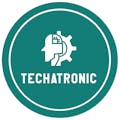It looks like you've shared a link to an image hosted on — likely related to one of their electronics or IoT projects. However, since the link points to an image (Untitled-design-2.jpg) without any description, article, or accompanying content, I’ll create a general 500-word article assuming that the image is related to an IoT or Arduino-based project, possibly a wireless communication or sensor-based system — which is common on
Title: Smart IoT System Using Arduino and Wireless Communication
In today’s world, the Internet of Things (IoT) is transforming how devices interact, communicate, and respond to real-world data. With the help of simple and affordable components like Arduino boards, sensors, and wireless modules, building a smart IoT system has become accessible to students, hobbyists, and developers alike.
This article explores a basic yet powerful smart system that integrates Arduino with wireless communication modules to collect environmental data and transmit it to a central hub for monitoring or cloud storage.
System OverviewA typical smart IoT setup consists of three major components:
Sensor Node – Collects data from the environment using sensors.
- Sensor Node – Collects data from the environment using sensors.
Wireless Module – Sends the data from the sensor node to a receiver.
- Wireless Module – Sends the data from the sensor node to a receiver.
Gateway or Cloud Connection – Uploads the data online or displays it on a dashboard.
- Gateway or Cloud Connection – Uploads the data online or displays it on a dashboard.
Such a system is widely used in agriculture, weather monitoring, home automation, and industrial monitoring.
Key Components UsedArduino Uno or Nano: Acts as the brain of the system.
- Arduino Uno or Nano: Acts as the brain of the system.
DHT11 or DHT22: Sensors for measuring temperature and humidity.
- DHT11 or DHT22: Sensors for measuring temperature and humidity.
NRF24L01 or ESP8266: Wireless communication modules for transmitting and receiving data.
- NRF24L01 or ESP8266: Wireless communication modules for transmitting and receiving data.
Breadboard and jumper wires: For circuit connections.
- Breadboard and jumper wires: For circuit connections.
Power source: Battery or USB.
- Power source: Battery or USB.
The sensor node reads environmental data using the DHT11 sensor. The Arduino processes the readings and sends the information via the NRF24L01 or Wi-Fi module. The receiving unit — another Arduino or NodeMCU — captures this data and either displays it on an LCD screen or uploads it to a cloud service like ThingSpeak or Blynk.
For example, a user can view real-time temperature and humidity of a greenhouse remotely via their smartphone. If a certain threshold is crossed, the system can trigger alerts or even activate devices like fans or sprinklers.
Applications of This ProjectSmart Agriculture: Monitor soil and environmental conditions.
- Smart Agriculture: Monitor soil and environmental conditions.
Weather Stations: Collect real-time data from various locations.
- Weather Stations: Collect real-time data from various locations.
Home Automation: Control lights, fans, and appliances wirelessly.
- Home Automation: Control lights, fans, and appliances wirelessly.
Industrial Safety: Detect gas leaks or overheating in factories.
- Industrial Safety: Detect gas leaks or overheating in factories.
Low cost: Components are cheap and widely available.
- Low cost: Components are cheap and widely available.
Scalability: Add more sensors or nodes easily.
- Scalability: Add more sensors or nodes easily.
Flexibility: Code and hardware can be modified as needed.
- Flexibility: Code and hardware can be modified as needed.
Educational: Great for learning about sensors, coding, and communication protocols.
- Educational: Great for learning about sensors, coding, and communication protocols.
This simple yet functional IoT project helps beginners learn the core concepts of data collection, processing, and wireless communication. Using Arduino and sensor modules, developers can build systems that monitor and respond to their surroundings intelligently. As IoT technology continues to grow, mastering these basic systems provides a strong foundation for future innovations.





_ztBMuBhMHo.jpg?auto=compress%2Cformat&w=48&h=48&fit=fill&bg=ffffff)











Comments